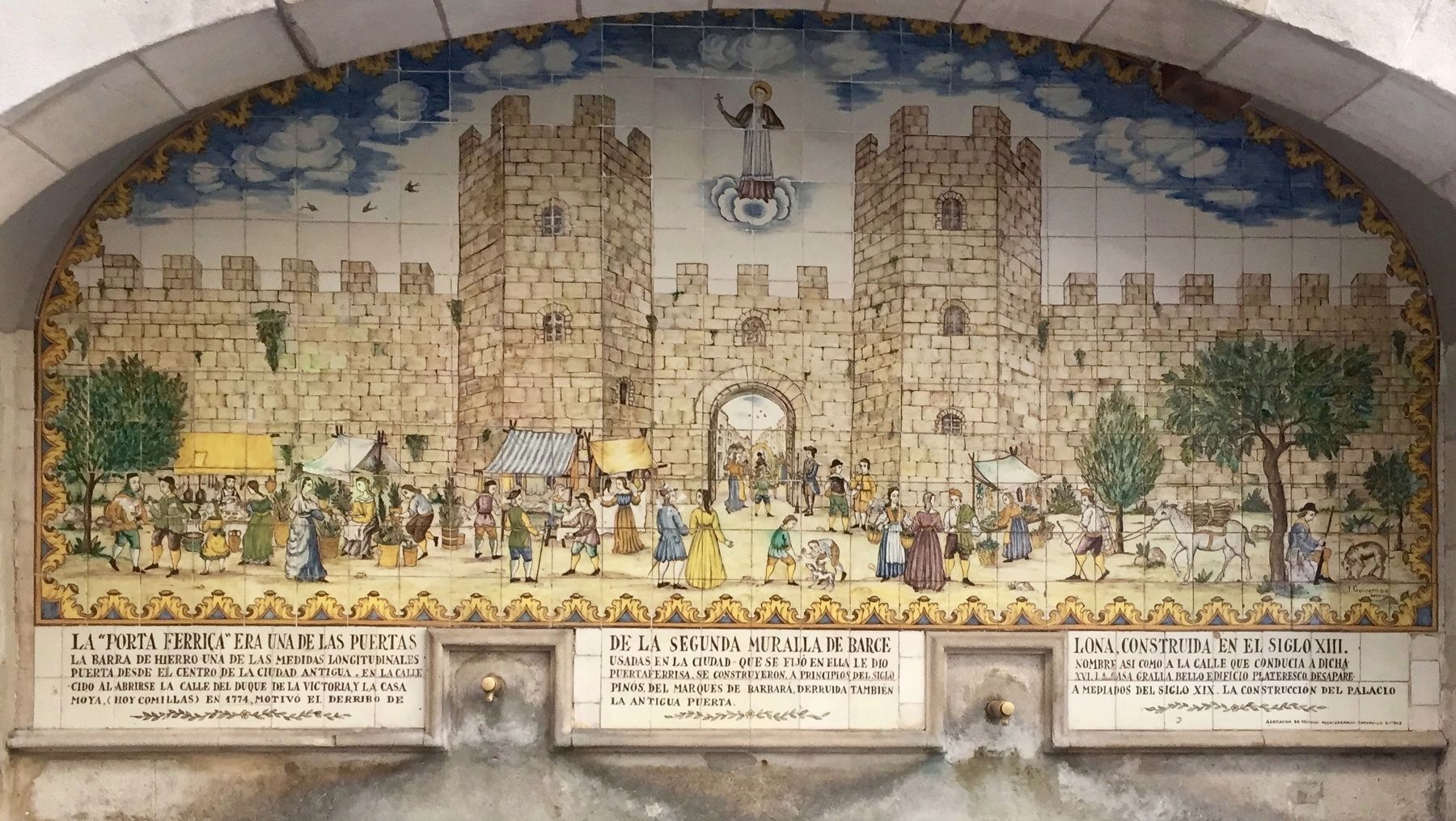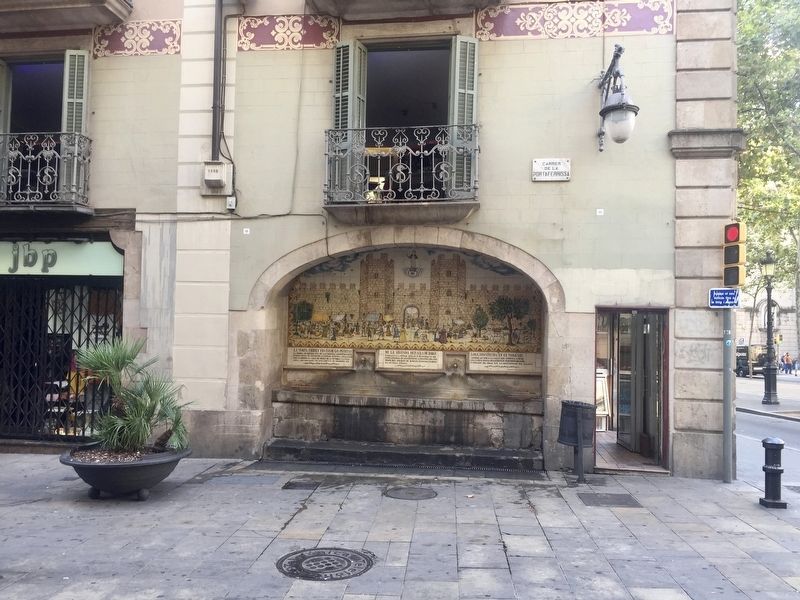El Call in Barcelona, Catalonia, Spain — Southwestern Europe (Iberian Peninsula)
Portaferrissa - La "Porta Ferriça" / Portaferrissa - The Iron Gate
Inscription.
-
Erected 1959 by Asociación de vecinos – Puertaferrisa – Cucurulla – Boters.
Topics. This historical marker is listed in this topic list: Forts and Castles. A significant historical year for this entry is 1774.
Location. 41° 22.983′ N, 2° 10.316′ E. Marker is in Barcelona, Cataluña (Catalonia). It is in El Call. Marker is at the intersection of Carrer de la Portaferrissa and La Rambla, on the left when traveling west on Carrer de la Portaferrissa. Touch for map. Marker is at or near this postal address: Carrer de la Portaferrissa, 2, Barcelona, Cataluña 08002, Spain. Touch for directions.
Other nearby markers. At least 8 other markers are within walking distance of this marker. Lluís Millà i Reig (1921-2005) (within shouting distance of this marker); Antoni Campillo i Matheu (within shouting distance of this marker); Francesc Salva i Campillo (1751-1828) (within shouting distance of this marker); Montserrat Caballé (within shouting distance of this marker); Scala Dei (about 90 meters away, measured in a direct line); Maurici Serrahima i Bofill
(about 120 meters away); Angel Guimerá (about 120 meters away); Joan Magriñà i Sanromà (about 120 meters away). Touch for a list and map of all markers in Barcelona.
Also see . . .
1. Portaferrissa, la fuente que recuerda la Barcelona amurallada (Lavanguardia, in Catalan). "Since 1959, the fountain has been decorated with a ceramic tile mural made by Joan Baptista Guivernau, installed on the occasion of the Feast of Our Lady of Mercy. The mural reflects a daily scene of walled Barcelona from the 18th century, with its people walking in front of the Ferrissa Gate full of commercial activity, and an image of the Saint Josep Oriol. In the central part of the fountain, between the spigots, a text written by Pere Voltes provides historical background." (Submitted on December 4, 2019.)
2. Carrer de la Portaferrissa, 2. Font de la Portaferrissa (Ajuntament de Barcelona, in Catalan). "The Portaferissa fountain is probably one of the oldest in the city of Barcelona. It was built in the 17th century, specifically in 1681, adjacent to the wall abutting the Porta Ferrissa, one of the gates of the second wall of the city..." (Submitted on December 4, 2019.)
3. La casa Gralla. El periple d'un monument (MUHBA, in Catalan). "...La Casa Gralla, located on Calle de la Portaferrissa, was one of the most admired in Barcelona for the sculptural ornamentation that had embellished the façade since the 16th century. Its prestige was maintained over time - as was highlighted in travel books and the description of city monuments - but this did not save it from demolition, as in 1856 it fell victim to the opening of Duc de la Victòria street and subsequent real estate development...." (Submitted on December 4, 2019.)
Credits. This page was last revised on February 3, 2023. It was originally submitted on December 3, 2019, by Andrew Ruppenstein of Lamorinda, California. This page has been viewed 338 times since then and 65 times this year. Photos: 1, 2. submitted on December 3, 2019, by Andrew Ruppenstein of Lamorinda, California.

